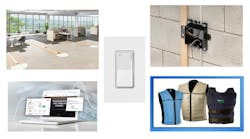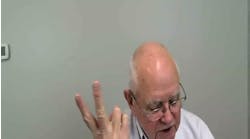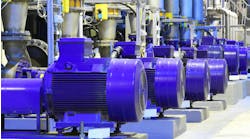You joined the company a few weeks ago as the electrical maintenance manager. The company makes a fiber-based product, so much of the plant is a Class III hazardous location.
During your job interview, you asked the plant engineer, “What keeps you up at night?” His answer was there has been too high a rate of motor failure and one motor actually caught fire. On your first day, the plant engineer told you to wait until a motor failed before investigating. Early this morning, one failed and it also put out some smoke.
How should you conduct your investigation?
The usual suspects
The investigation should have started much earlier, not only after the next failure. The problem may not be related to the hazardous location. So as a first pass, address the typical issues:
- Calculate voltage imbalance. If it’s more than 5%, eliminate voltage imbalance issues at their source and also put motors on their own transformers/panels as much as is practical.
- Starting with the more expensive motors (in terms of downtime), install vibration monitoring for early detection of bearing problems.
- Test for power factor at each motor. Where it’s low, install power correction at the motor. Do this either with a capacitor (for across-the-line starting), or, preferably, with a variable-speed drive or soft starter that has power factor correction.
- Ensure everything is correctly bonded. In addition to following Art. 250, Part V, make sure the additional requirements in 503.30 are followed since you’re on this issue. It’s also a good idea to visually follow the equipment bonding jumper to look for gaps such as EMT that has come apart or nonmetallic raceway mixed in with metallic raceway.
- Do any of these motors drive gearboxes? If so, ensure the gear oil is synthetic, of the correct viscosity (which, this being gear oil, is always high), in the proper amount, clean, and stinky. Why stinky? One sign you’re working with actual gear oil is its distinctive sulfur smell due to the organosulfur compounds used in gear oil. Note that if you get this on your clothes, you can remove it with white vinegar.
- Are the motors aligned, and do they stay that way under load? Static alignment cannot account for displacement resulting from misdirected torque. For example, a base on inadequate rigidity for the torque being developed will flex; this will cause the whole system to go out of alignment.
- Walk through the motor lubrication procedure. Look for incompatible grease or incorrect method, either one of which could totally explain the high failure rate. One solution to grease incompatibility is to color-code all lubricants and match that code on the affected equipment. Training is the only effective solution to an incorrect method. Assume nobody knows the correct method and go from there.
Once the above conditions are free of deficiency, you need to move on to application specifics:
- Is there a washdown procedure? If so, dust-tight installations are not automatically watertight installations and adjustments will need to be made. If not, perhaps that’s the problem; see if the motors are covered in fiber.
- Is there fiber pretty much everywhere? Install a shield and ducting such that the motor has less exposure to flying fibers but can still get cooling air. Add forced-air cooling through the ducting.
- Are these motors completely enclosed? If not, they are sucking fibers in through their vents. This is the most likely cause of failure in this application.
- Is the configuration of equipment so tightly packed that you have in effect a giant heater sitting right next to the motor? Use thermography to see the thermal environment. Simply upgrading to a higher heat rating insulation of the motor could solve this failure problem. However, that upgrade in conjunction with air-flow improvement efforts will produce the best gain while also reducing heat stress on the entire machine or equipment system.
Motor replacement specifics
- Make the replacement a high-efficiency motor; it is simply built better and will last longer. It also runs cooler.
- Send the failed one to a motor shop for a forensic analysis. Keep doing this with failed motors until it seems all failure causes are identified. After that point, send failed motors out for analysis less frequently and eventually send out only critical motors. Don’t fall into the trap of trying to justify this expense against the cost of a replacement motor. Justify this expense against the cost of a motor failure. Another term for motor failure is production loss, except in the case of a safety-related motor, in which case another term is potential loss of human life. Think of motor loss in terms of what’s actually lost; the motor itself is often a relatively minor cost.
- Perform the motor lubrication PM, making sure you’re using a grease that is 100% compatible with what’s already in there. If you don’t know what’s there, contact the motor manufacturer. Note the correct grease in the CMMS. If practical, have a tag made and affixed with the motor so this information is right on the motor. It should be color-coded to match the color-coding you have on the grease gun tubes and other grease containers in the lubrication storage area.
- Perform a laser alignment, check the gearbox oil, check for blockages of cooling air, look for unwanted sources of heat and correct for them, perform baseline insulation resistance tests so you can compare to post-mortem data in the event of early failure. Take a photo of the motor nameplate, and add that to the CMMS.




